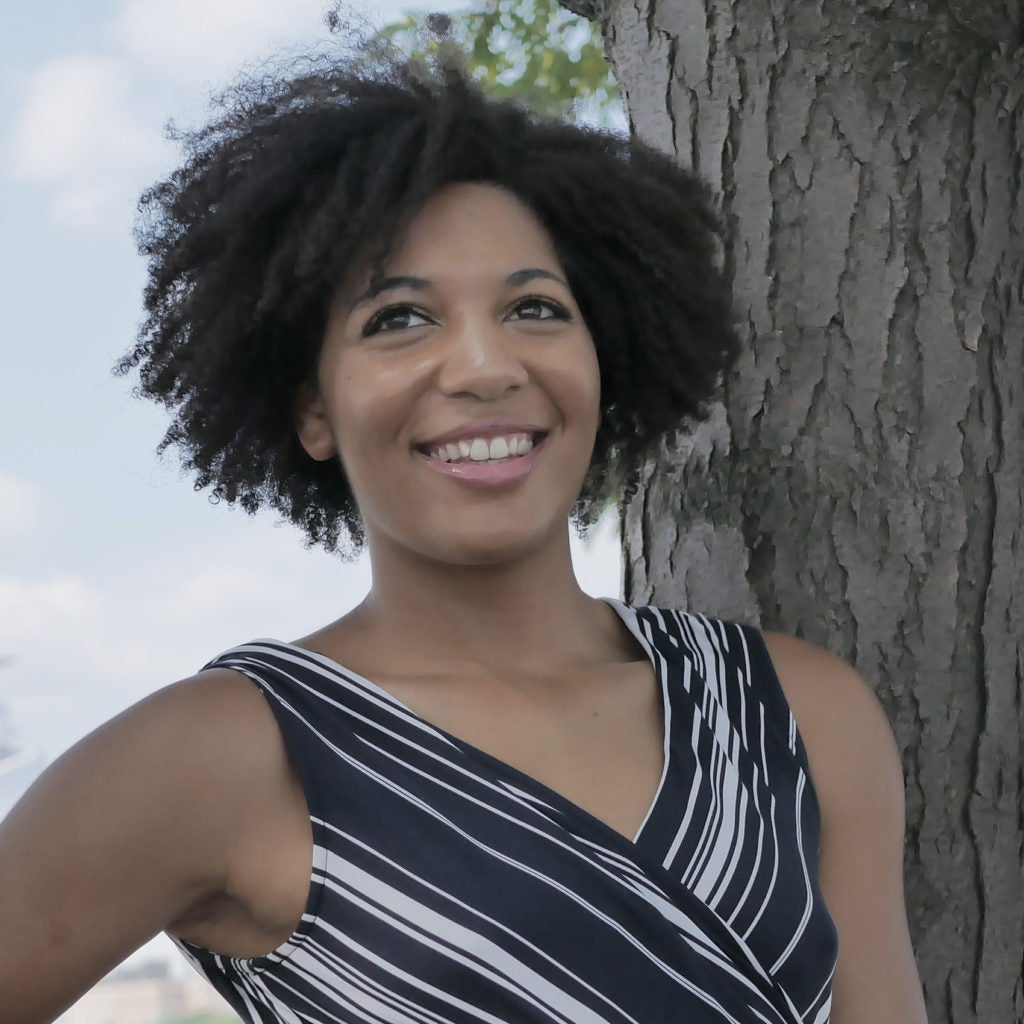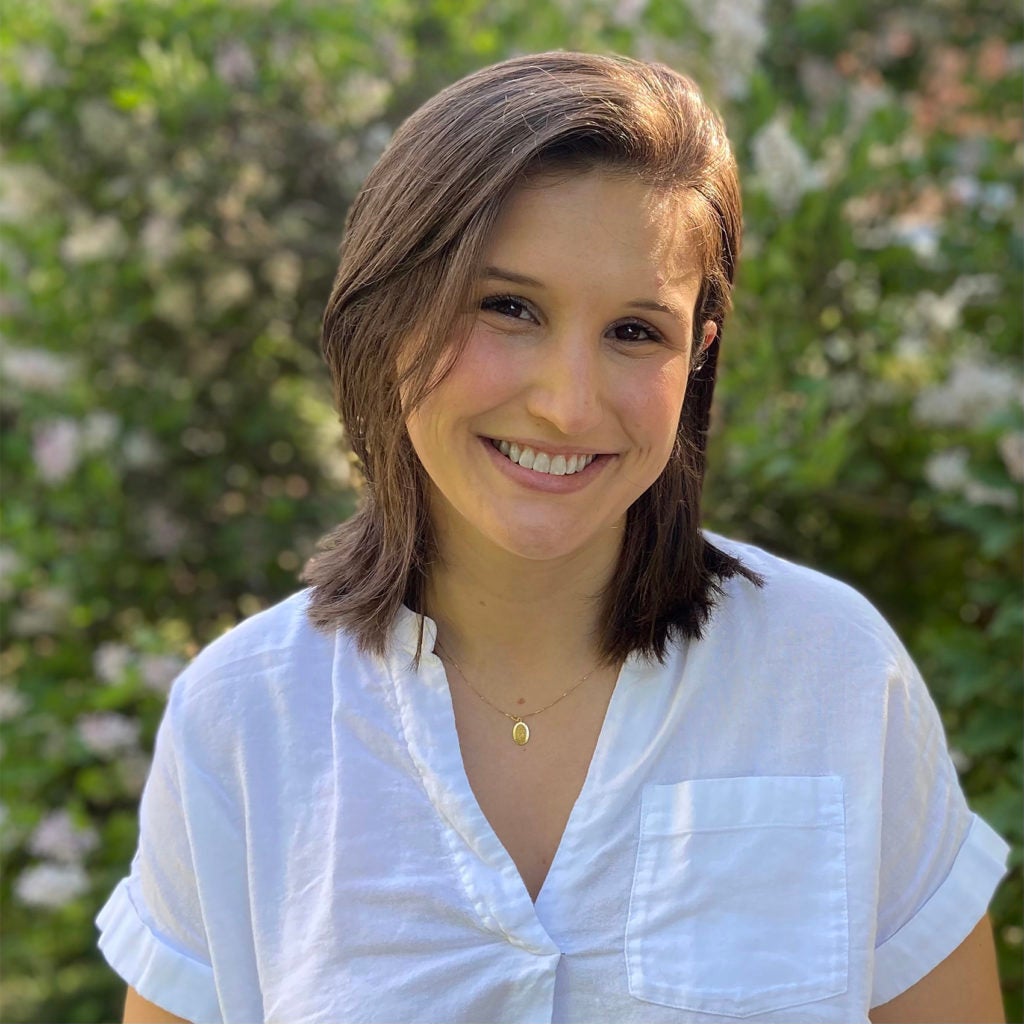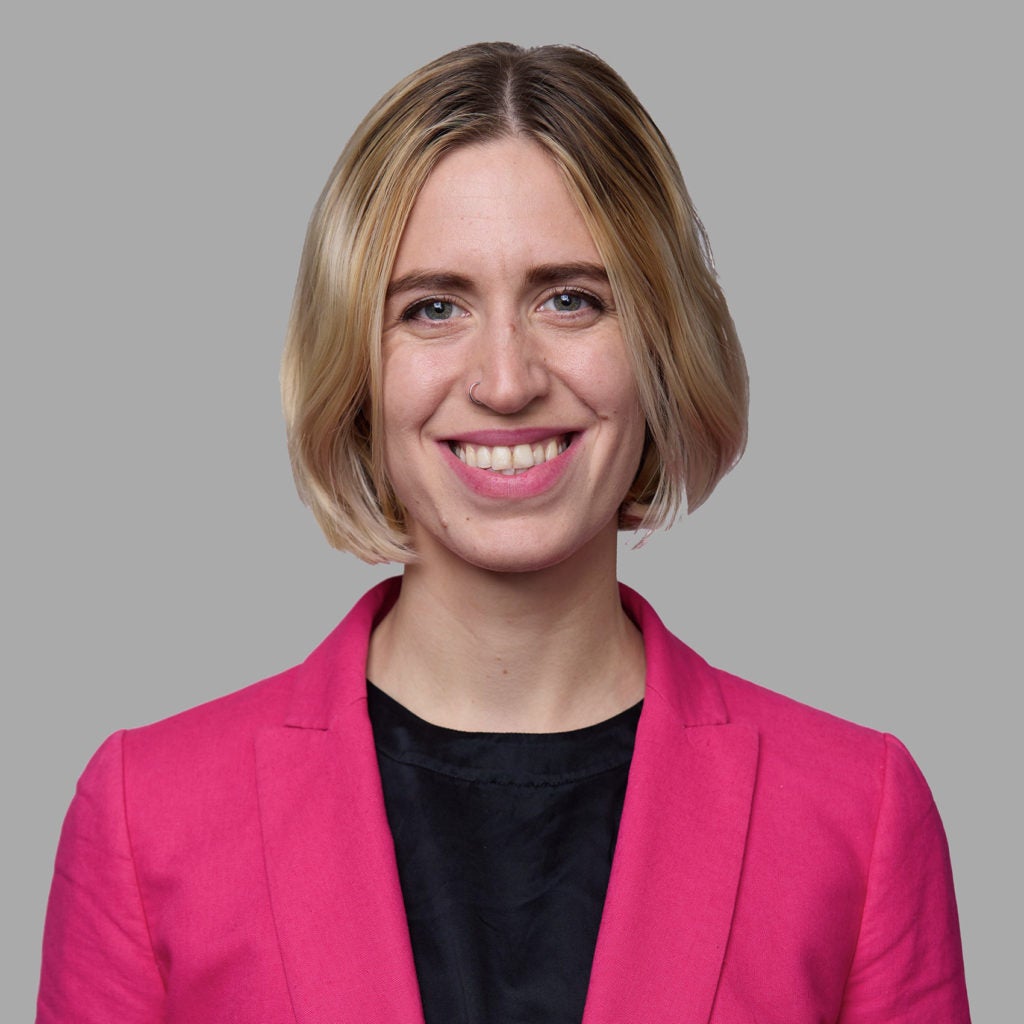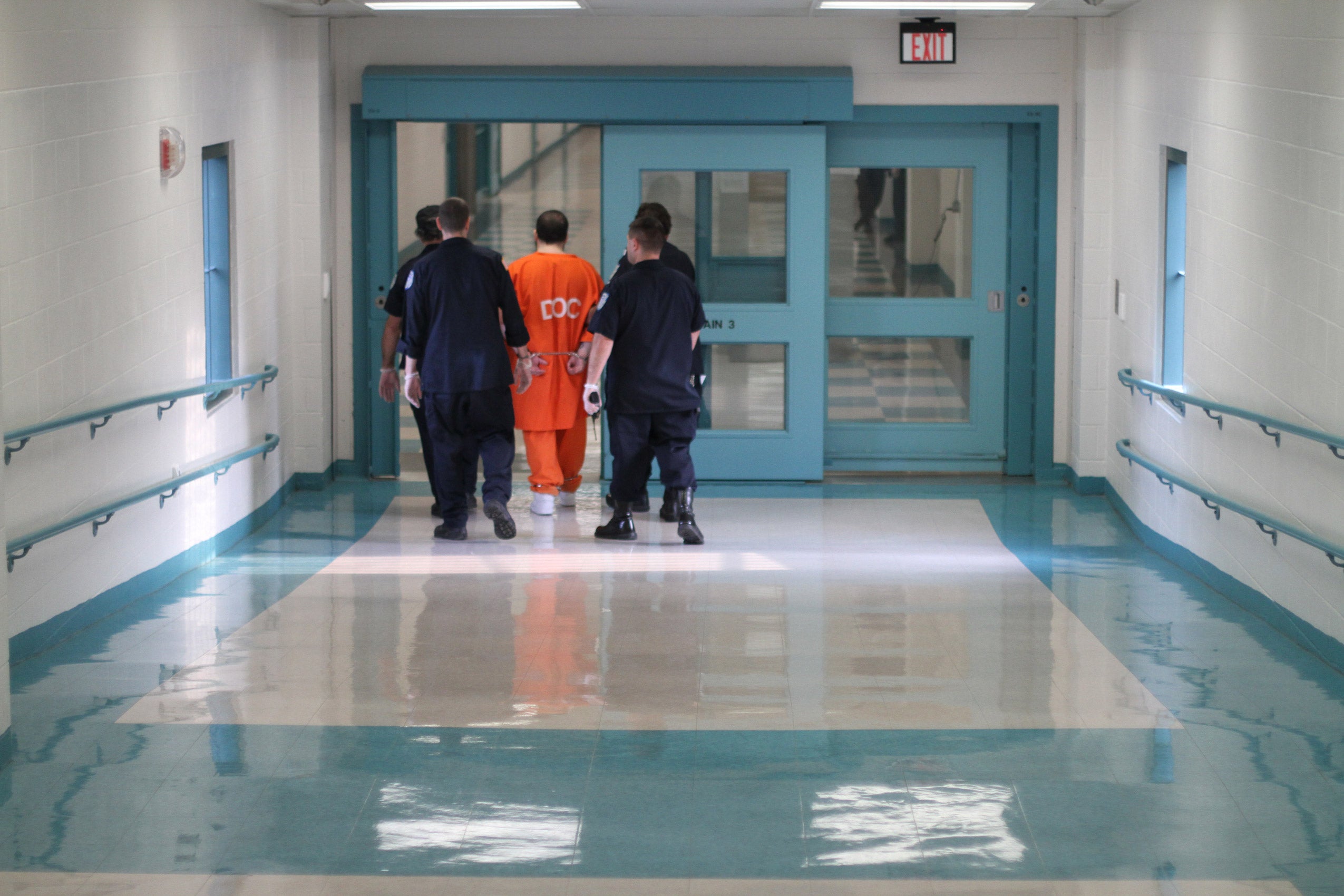On January 10, 2020, a group of incarcerated people at the Souza-Baranowski Correctional Center, a maximum security prison in Shirley, Massachusetts, attacked four corrections officers. The assaults were caught on camera, and those responsible were identified, transferred to other prisons, and criminally charged for their role in the violence. But although the incident itself was over, its aftermath was just beginning, say current and former members of Harvard Law School’s Prison Legal Assistance Project (PLAP), a student practice organization that represents incarcerated people.
Immediately after the incident, the facility went into an extended lockdown. Then, advocates say, corrections officers, seemingly in a bid to restore authority, began harassing and, in some cases, brutalizing prisoners — particularly Black and Latino prisoners. Notably, none of the victims of these incidents had been accused of being involved with the events on January 10, says Joel Thompson ’97, managing attorney at PLAP.
Alexis Yeboah-Kodie ’21, who was involved with PLAP all three years of law school and served as co-executive director her final year, says her strong relationships in the community clued her in early that something troubling was happening in the prison. “I learned very quickly about what was going on, both from outside the prison and from inside the prison,” she says.
What was going on, as Yeboah-Kodie and other PLAP members were discovering, was grim. Dozens of stories began to emerge of verbal and physical abuse by corrections officers, of prisoners beaten or attacked with pepper spray or dogs, and of others shocked with Tasers. Thompson says that in many cases, those targeted were also issued false disciplinary reports “as a way to cover up the brutality” by the officers themselves.
The backlash appeared to be widespread. A Boston Globe investigation reported that Prisoners’ Legal Services of Massachusetts, which investigates claims of prison brutality, received 118 complaints of excessive force by corrections officers at the prison in the month and a half following January 10.
“This wave of violence, given its timing and location, bears all the marks of collective punishment,” says Thompson.
PLAP, which has a long history of assisting prisoners with internal disciplinary reports, immediately jumped into action. At first, its members mined their contacts in the community and inside the prison for details. “We were fielding calls and taking down any information we could get,” says Maddy Gates ’21. “We were trying to coordinate with other programs and individuals to get a sense of what was going on.”

In what turned out to be PLAP’s last in-person event before the coronavirus pandemic, says Yeboah-Kodie, the organization facilitated a panel of lawyers and community organizers involved in the larger response to share what it had learned and to call attention to the situation. The panel was one of the asks resulting from emergency community meetings attended by Yeboah-Kodie at Families for Justice as Healing, an organization dedicated to creating alternatives to mass incarceration. “We were able to provide information to loved ones, and create strategies for keeping the pressure on Souza to make sure that the people inside were as protected as they possibly could be,” says Yeboah-Kodie.
During this time, PLAP members also learned how to have difficult conversations, she adds. “Part of my role was to support PLAPpers in knowing how to handle and facilitate calls primarily from loved ones, because there was a complete lockdown. For a period of time, no one — not even lawyers — could enter the prison, so we started to get calls from people who were very scared.”
As the situation became clearer, PLAP student attorneys, under the supervision of Thompson and fellow supervising attorney John Fitzpatrick ’87, began taking on clients who had been issued disciplinary reports. The goal, for many clients, was to receive an internal hearing to present evidence that could dismiss or reduce the charges against them, which otherwise could result in consequences like loss of mail or visitation privileges, solitary confinement, transfer to a higher-security housing unit or facility, or even criminal charges.
PLAP student attorneys opened several cases by March 2020, not only learning more details about what had happened inside the prison, but also how to personally process these disturbing events, says Yeboah-Kodie. “There was a lot of violence happening, and even though we were not the ones experiencing it, when you go into the prison and you see corrections officers having a pizza party, and then a client comes in and he is beaten, his hair is ripped out, he has visibly lost weight, shaken, and telling you all the things that are happening … It can be very jarring.”
It is also why Yeboah-Kodie considered mentorship of new student attorneys to be a critical component of her work. “It is vicarious trauma management. How do you handle what your client is saying to you? How do you express empathy to your clients? And how do you make sure that you’re taking care of yourself, so you can continue to advocate in the best possible way for your client?”
Shifting strategies
Then, just as cases were ramping up, COVID arrived.
Before the pandemic, says Gates, most client meetings would occur in person at the prison. But new precautions required a pivot to Zoom calls to discuss cases. Joan Steffen ’22 says this could be convenient for student attorneys, who no longer had to drive to the prison to talk to clients.
But, says Gates, “It was a bit of a hardship for clients. I think they were still strip-searching clients before our calls, even though, obviously, they were not going to be in the room with anyone else. As an advocate, it’s always something you want to factor in — what you’re asking of your client in order to communicate with them.”
The prison also did not make working on the cases easy, sometimes withholding evidence and internal reports that could have bolstered the victims’ stories, says Thompson. Many of the cases took months, even up to a year, to resolve. “Prison officials were trying to delay things as much as possible. You couldn’t get the information you needed for your cases, or to start building bigger cases,” adds Yeboah-Kodie.

And when clients and their PLAP attorneys at last had the chance to present their cases in a hearing before prison officials, the meetings were no longer done face-to-face or Zoom, but by old-fashioned conference calls. “It was very, very hard to know what was going on over the phone,” Gates says. “It’s difficult to know if anyone’s paying attention to what you’re saying. It could be very hard to hear witnesses when you’re questioning them. It definitely presented some challenges.”
Remarkably, says Thompson, all of these things were occurring against the backdrop of other changes wrought by COVID. “Just after our clients’ lives were turned upside-down, the students’ lives were also turned upside-down,” he says. “School went remote, we were suddenly in a pandemic, they were figuring out living arrangements, how to do online school, etc. Everything was very uncertain. Students during that time carried what I think was a heavy personal burden, and here they were juggling that with these heavy cases at the same time.”
Yet despite the new — and usual — barriers, PLAP students pressed on, saying they were determined to achieve what they saw as a semblance of justice for their clients.
Steffen herself successfully represented several individuals who had been accused of assaulting guards. “In fact, the guards had actually assaulted them,” she says. “In at least one case, the disciplinary charges were just so disproportionate to the factual allegations, and it came right in the aftermath of the incident at Souza.”
Ultimately, members of PLAP assisted 21 people at Souza who had collectively received nearly 40 disciplinary reports. Because the charges are brought by the prison itself, the deck can be stacked against clients, says Thompson. But although not every case was successful, “The students confronted the Department of Correction head on, forcing the complaining officers to appear and defend their actions out loud, and arguing without apology that the allegations against our clients were retaliatory and/or designed to cover up or rationalize officer violence,” he says.
A few cases were closed because clients were set to be released from prison. And documents and testimony obtained by PLAP helped further an investigation by Prisoners’ Legal Services that recently resulted in a federal class action lawsuit brought by PLS and Hogan Lovells.
PLAP members say they are proud of their successes, but, adds Steffen, it was often just as meaningful to clients that there was someone to simply “bear witness to all these experiences.”

Steffen, who was mentored by Yeboah-Kodie as a PLAP member, and who also worked on the lawsuit with Prisoners’ Legal Services, says that she and many of her fellow student attorneys saw their job as advocating for those who had suffered as a result of the prison system. “Just to help fight back against one more thing that was being levied against them.”
Because the assaults were disproportionately concentrated among Black and Latino prisoners, she says that her work also furthered her ability to talk frankly about race and racism. “I came in with a good baseline understanding of some of the racial dynamics, and these experiences helped build my comfort level of talking about this issue with clients head-on. It was a useful skill to develop, especially since I want to go into criminal justice advocacy work.”
For Yeboah-Kodie, who is now a Skadden Fellow with the Justice and Accountability Center of Louisiana, her experiences with PLAP “emphasized the importance of all of the ways in which you can be connected to a community and to support that community.”
PLAP, says Yeboah-Kodie, wasn’t just representing clients, it was connecting with — and, importantly, working with — communities, partner organizations, and other allies. “When it comes to work that is impacting the most marginalized, the most disenfranchised, it is urgent work. As lawyers, we can play a small role, but a very useful role, if we know how to use the law as more than just legal representation.”
